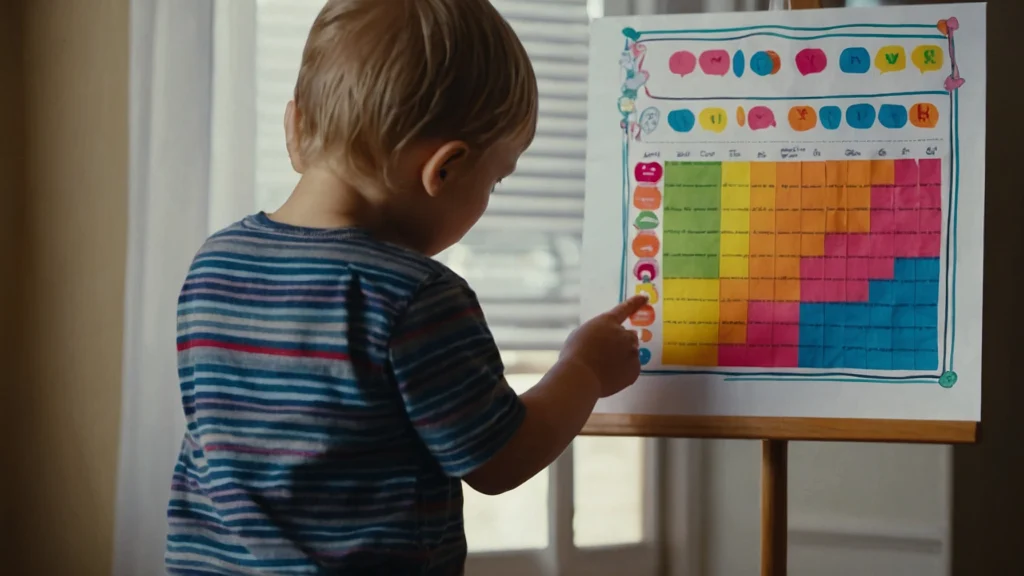
Introduction to Toddler Discipline
Parenting Tips – In the world of parenting, toddler discipline is a topic that often comes up. As parents, we want our children to grow into well-adjusted adults, and discipline plays a crucial role in that. But how do we discipline our toddlers effectively without resorting to yelling? This blog post will explore five effective strategies for disciplining toddlers without yelling, focusing on positive parenting techniques.
Before we delve into these strategies, it’s important to understand why discipline is so important in a toddler’s life. Discipline helps children learn self-control and responsibility. It teaches them the difference between right and wrong, and helps them understand the consequences of their actions.
Now, let’s explore the concept of positive parenting and how it relates to discipline. Positive parenting is a parenting style that emphasizes mutual respect and communication. Instead of punishing children for misbehavior, positive parenting focuses on teaching children how to behave by reinforcing good behavior.
Understanding Toddler Behavior and Discipline
The first step in effective toddler discipline is understanding toddler behavior. Toddlers are at a stage where they are exploring their environment and learning how to express their feelings. This can often result in behaviors that adults find challenging, such as tantrums, defiance, and aggression.
However, it’s important to remember that these behaviors are a normal part of toddler development. Toddlers are not misbehaving to be naughty or defiant, but rather because they are still learning about the world and their place in it. They are testing boundaries and learning about cause and effect.
Understanding this can help us approach discipline in a more empathetic and effective way. Instead of seeing misbehavior as something that needs to be punished, we can see it as an opportunity to teach our toddlers about appropriate behavior.
In the next sections, we will explore five strategies that can help you discipline your toddler effectively without resorting to yelling. These strategies are based on the principles of positive parenting and are designed to reinforce good behavior while discouraging misbehavior.
Positive Reinforcement: An Effective Toddler Discipline Strategy
Positive reinforcement is a powerful tool in shaping behavior and it’s particularly effective in toddler discipline. This strategy involves acknowledging and rewarding good behavior, which encourages your toddler to repeat it.
The American Academy of Pediatrics supports the use of positive reinforcement as an effective discipline method. They suggest that aversive disciplinary strategies, such as yelling or shaming children, are minimally effective in the short-term and not effective in the long-term. On the other hand, positive reinforcement can lead to long-term behavioral change.
Here’s how you can apply positive reinforcement in disciplining your toddler:
- Identify the behavior you want to reinforce: This could be anything from sharing toys with siblings to saying ‘please’ and ‘thank you’. Be specific about what behavior you’re looking to encourage.
- Provide immediate reinforcement: The reward should immediately follow the good behavior. This could be verbal praise (“Great job sharing your toy!”), a hug, or a small treat. The key is to make sure the reward is immediate so your toddler makes the connection between their behavior and the positive outcome.
- Be consistent: Consistency is key in positive reinforcement. Make sure to reinforce the behavior every time it happens to strengthen the association.
- Gradually raise the bar: As your toddler starts to consistently demonstrate the desired behavior, you can gradually raise the bar and start reinforcing for more complex or challenging behaviors.
Setting Clear Expectations: Key to Toddler Discipline
Setting clear expectations is another effective strategy for toddler discipline. Toddlers thrive on routine and predictability, and setting clear expectations can provide the structure they need to behave appropriately.
Here’s how you can set clear expectations:
- Be specific and realistic: Instead of vague instructions like “be good”, provide specific instructions like “please pick up your toys”. Make sure your expectations are realistic and age-appropriate.
- Consistency is key: Consistency helps toddlers understand what is expected of them. If you’re inconsistent, it can confuse your toddler and lead to more misbehavior.
- Communicate your expectations: Make sure your toddler understands what is expected of them. Use simple language and repeat your instructions if necessary.
- Reinforce compliance: When your toddler follows your instructions, acknowledge their effort. This will encourage them to comply with your expectations in the future.
Remember, setting clear expectations is not just about controlling your toddler’s behavior. It’s about teaching them self-discipline and helping them understand the consequences of their actions.
Time-outs: A Non-Yelling Toddler Discipline Strategy

Time-outs can be an effective discipline strategy when used correctly. The purpose of a time-out is to give your toddler a break from the situation and allow them to calm down. It’s not meant to be a punishment, but rather a way to help your toddler learn to manage their emotions.
Here’s how you can use time-outs effectively:
- Choose the right time: Use time-outs sparingly and only for serious misbehavior. For minor misbehaviors, try other strategies first.
- Keep it short: The general rule is one minute of time-out for each year of your child’s age. So, a two-year-old would get a two-minute time-out.
- Choose a suitable location: The time-out location should be a quiet, boring place with no distractions.
- Explain the reason: Make sure your toddler understands why they are being put in time-out. Use simple language and be calm and consistent.
- End with positivity: Once the time-out is over, give your toddler a hug and offer some positive reinforcement.
Remember, the goal of a time-out is not to punish, but to teach your toddler that certain behaviors are unacceptable.
Natural Consequences: Teaching Toddlers Discipline
Natural consequences can be a powerful tool for teaching discipline. This strategy involves allowing your toddler to experience the natural consequences of their actions, rather than imposing artificial consequences.
For example, if your toddler refuses to eat their dinner, a natural consequence might be that they feel hungry later. Or if they refuse to put on their coat before going outside, they might feel cold. These experiences can help your toddler learn that their actions have consequences.
Here’s how you can use natural consequences effectively:
- Ensure safety: Never allow a natural consequence to put your toddler’s safety at risk. For example, if your toddler runs into the street, it’s not appropriate to let them experience the natural consequence.
- Explain the consequence: Make sure your toddler understands the potential consequence of their action. Use simple language and be patient.
- Allow the consequence to happen: If your toddler continues with the behavior, allow the natural consequence to happen. This can be difficult, but it’s important for your toddler’s learning.
- Discuss the experience: After the consequence has occurred, talk to your toddler about what happened and why. This can help them understand the connection between their actions and the consequence.
Distraction and Redirection: Toddler Discipline Techniques
Distraction and redirection are effective techniques for toddler discipline. These strategies involve diverting your toddler’s attention away from a problematic behavior and towards a more appropriate activity.
For example, if your toddler is about to draw on the wall, you could distract them by pointing out a bird outside the window, or redirect them by offering them paper to draw on instead.
Here’s how you can use distraction and redirection effectively:
- Choose an engaging alternative: The alternative activity should be something that your toddler finds engaging and enjoyable. This could be a favorite toy, a book, or a simple game.
- Make the transition smooth: Try to make the transition from the problematic behavior to the alternative activity as smooth as possible. You could say something like, “Look at this interesting book! Let’s read it together.”
- Praise your toddler: Once your toddler engages in the alternative activity, praise them for making a good choice. This reinforces the positive behavior and makes them more likely to choose the appropriate behavior in the future.
Remember, the goal of distraction and redirection is not to punish, but to guide your toddler towards appropriate behavior.
Conclusion: Embracing Discipline Without Yelling
In conclusion, disciplining toddlers doesn’t have to involve yelling or punishment. By using strategies such as positive reinforcement, setting clear expectations, time-outs, natural consequences, and distraction and redirection, you can effectively discipline your toddler and teach them valuable life skills.
Remember, the goal of discipline is not to control your child, but to teach them self-discipline. It’s about helping them understand the consequences of their actions and guiding them towards making good choices.
Discipline is a journey, not a destination. It takes time, patience, and consistency. But with these strategies, you can make that journey a little easier and a lot more effective.